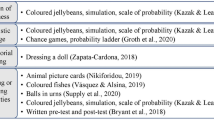Abstract
In many countries, the first concepts of calculus (such as functions)are taught by looking at examples, noticing their properties and generalizing from them in some implicit ways. Students have no means to discuss the general truth of a statement, or to examine the validity of a theorem, relative to the mathematical field. This knowledge is nonetheless required by teachers at the university level. The question is, therefore, if it is possible to organize activities for beginning calculus students, which would nevertheless lead them to working on statements and validity of theorems. This paper presents a teaching approach related to the concept of function, which aimed at leading students working within a graphic milieu to producing, discussing and testing the validity of mathematical statements and theorems. The intention of the approach was to use the procedural aspect of the graphs to provide a favorable milieu for linking the intuitive and the formal knowledge(such as required at the university for establishing proofs). The approach was experimented with a group of students. After the experiment, the students indeed became able to think of functions as objects and to engage with questions of validity of mathematical statements.
Similar content being viewed by others
REFERENCES
Alson, P.: 1989, ‘Paths and graphs of functions’, in Focus on Learning Problems in MathematicsSpring edition, 11/2, 99-106.
Alson, P.: 1996, Metodos de graficacion. Caracas, Universidad Central de Venezuela, Ed. ERRO.
Bloch, I.: 1999, ‘L'articulation du travail mathématique du professeur et de l'élève: détermination d'un milieu’, Recherches en Didactique des Mathématiques19/2, 135-194.
Bloch, I.: 2000a, ‘Dimension adidactique et connaissance nécessaire: un exemple de “retournement” d'une situation’, Actes du colloque sur la théorie des situations, Université Bordeaux 2, pp. 31-38.
Bloch, I.: 2000b, L'enseignement de l'analyse à la charnière lycee / universite: savoirs, connaissances et conditions relatives à la validation, Thèse, Université Bordeaux I.
Bloch, I.: 2002a, ‘Différents niveaux de modèles de milieux dans la théorie des situations: recherche d'une dialectique scientifique entre analyse théorique et contingence’, Actes de la XIe Ecole d'été de didactique des mathématiques, Editions La Pensée Sauvage, Grenoble, France, pp. 125-139.
Bloch, I.: 2002b, ‘Transposition of didactical knowledge: the case of mathematics teachers' education’, Proceedings of the Second International Congress on Teaching Mathematics at Undergraduate Level, University of Crete.
Brousseau, G.: 1997, Theory of Didactical Situations in Mathematics, Edited and translated by Nicolas Balacheff, Martin Cooper, Rosamund Sutherland and Virginia Warfield, Mathematics Education Library, Kluwer Academic Publishers, The Netherlands.
Dreyfus, T.: 1999, ‘Why Johnny can't prove’, Educational Studies in Mathematics38, 85-109.
Duval, R.: 1993, ‘Registres de représentation sémiotique et fonctionnement cognitif de la pensée’, Annales de Didactique et de Sciences Cognitives5, 37-65.
Duval, R.: 1996, ‘Quel cognitif retenir en didactique des mathématiques?’ Recherches en Didactique des Mathématiques16/3, 349-380.
Funrighetti, F. and Somaglia, A.: 1994, ‘Functions in algebraic and graphical environments’, in A. Antibi (ed.), Actes de la 46e rencontre CIEAEM, Toulouse, France, pp. 248-255.
Maschietto, M.: 2001, ‘Fonctionnalités des représentations graphiques dans la résolution de problèmes d'analyse à l'université’, Recherches en Didactique des Mathématiques21/1-2, 123-156.
Sackur, C.: 2000, ‘Experiencing the necessity of the mathematical statements’, Proceedings of the 24th Conference of the International Group for the Psychology of Mathematics Education, Hiroshima, Japan, IV, pp. 105-112.
Schwarz, B. and Dreyfus, T.: 1995, ‘New actions upon old objects: a new ontological perspective on functions’, Educational Studies in Mathematics29, 259-291.
Slavit, D.: 1997, ‘An alternate route to the reification of function’, Educational Studies in Mathematics33-3, 259-281.
Tall, D.: 1996, ‘Function and calculus’, in Bishop et al. (eds.), International Handbook of Mathematics Education, Kluwer Academic Publishers, The Netherlands, pp. 289-325.
Author information
Authors and Affiliations
Rights and permissions
About this article
Cite this article
Bloch, I. Teaching functions in a graphic milieu: What forms of knowledge enable students to conjecture and prove?. Educational Studies in Mathematics 52, 3–28 (2003). https://doi.org/10.1023/A:1023696731950
Issue Date:
DOI: https://doi.org/10.1023/A:1023696731950




